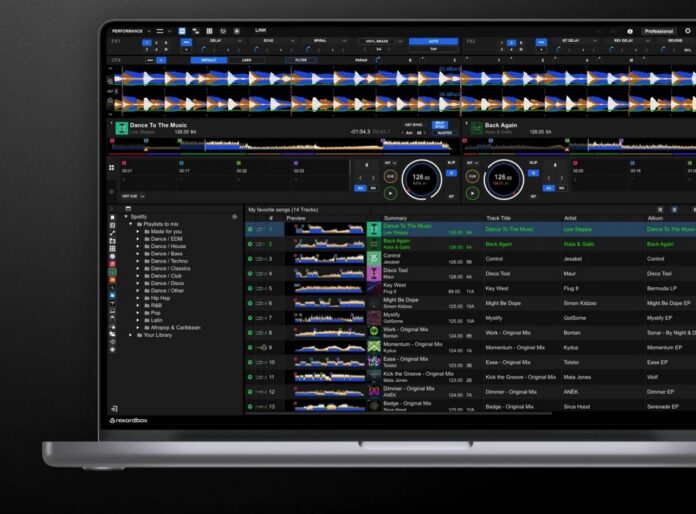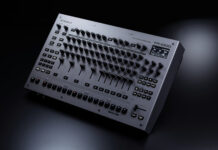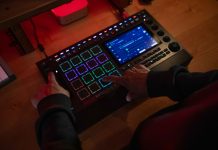Spotify just made a return to DJ software: as of today, rekordbox users with a Premium subscription can stream tracks and playlists directly inside the software. The streaming service also has added integration to djay and Serato – but Traktor and VDJ seem “left behind. It’s the kind of update that promises convenience and discovery at your fingertips, but also raises questions about reliability, licensing, and what “crate-digging” even means when every DJ has the same 100 million-track library.
Editor’s note: yes, Spotify was once in djay ten years ago, and then they took it away in 2020. It was also in Virtual DJ, and removed in 2017.
How It Works
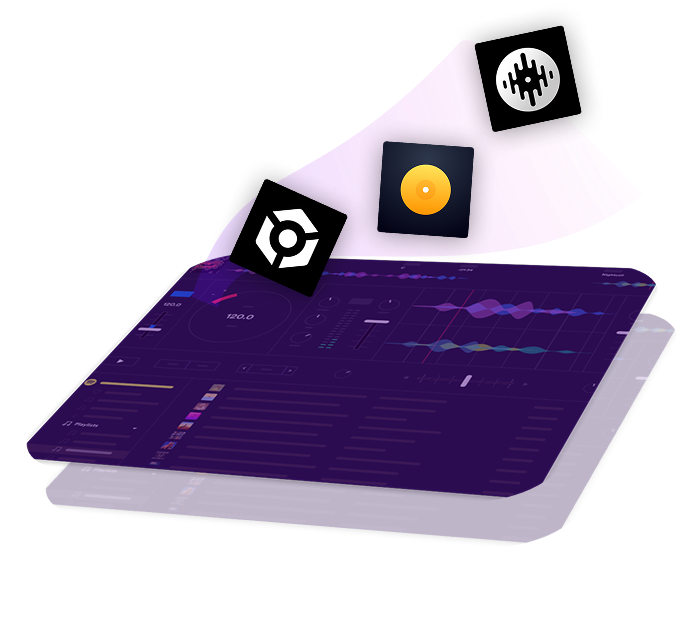
Spotify Premium subscribers can now log into rekordbox and stream the platform’s full catalog directly inside the software. Your Spotify playlists appear automatically in rekordbox’s library, synced just like crates. You can search, browse, and mix songs in real time, including editorial playlists and algorithmic recommendations. You can test mixes with your personal playlists, audition new tracks, or handle on-the-fly requests without needing to buy or download the song first.
Right now, integrations are limited to desktop versions of rekordbox, Serato, and Algoriddim’s djay, across 51 different countries. Standalone and CDJ/XDJ hardware support is not yet on the roadmap.
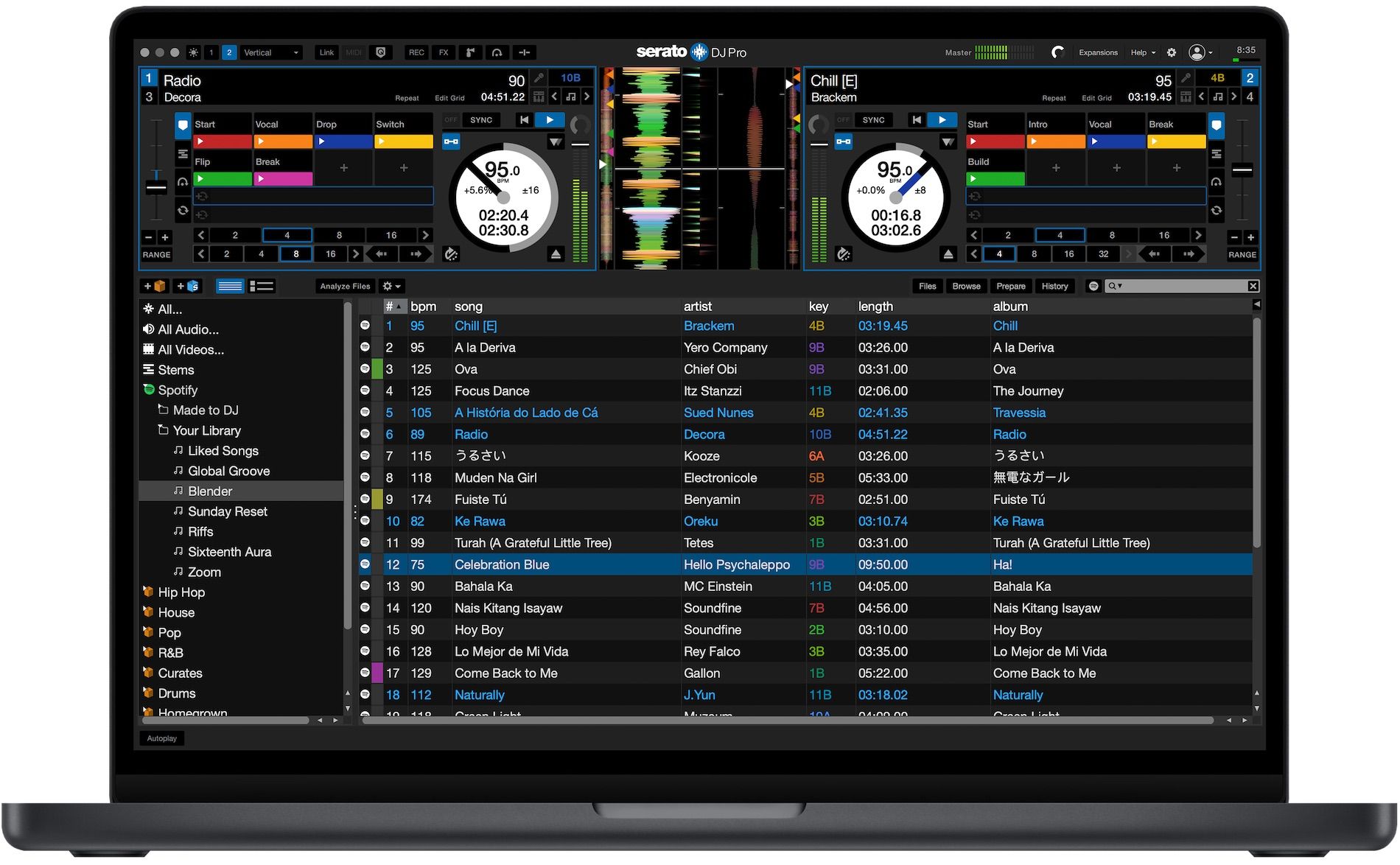
Unlike locally-stored audio files, however, Spotify streams don’t behave as fully editable audio assets. Cue points, hot loops, and stems are limited or unavailable, depending on licensing and technical agreements between each software company, Spotify, and the artists/labels/distribution companies. That means Spotify integration works best for practice, idea sketching, or casual gigs, and far less so for professional situations where precision and reliability are critical.
The Pros
For gear-heads and workflow nerds, there are a few real advantages here:
- Playlist Sync: Your Spotify playlists automatically appear in rekordbox. No more exporting through Soundiiz, Beatport LINK conversions, or manual metadata wrangling.
- Track Discovery: Spotify’s algorithmic playlists and user-curated lists open up a broad discovery channel inside rekordbox. You can audition tracks in context without having to commit to a purchase first.
- Low-stakes Testing: DJs can test how unfamiliar genres, tempos, or mash-ups feel inside their set structure before deciding whether to invest in downloads.
- Casual Flexibility: For small gigs, wedding receptions, or bar sets, this reduces the friction of dealing with requests or wide-audience playlists.
The Cons
Here’s where Spotify in rekordbox falls short for serious use:
- No Offline Mode (Yet): Tracks must be streamed live. If your Wi-Fi connection drops, so does access to your library.
- Metadata Control: Unlike local files, Spotify tracks don’t provide editable ID3 tags. That limits how you can organize and annotate your collection inside rekordbox.
- Cue Points & Stems: Current integration doesn’t support full cue/loop memory or stem separation. In practice, this means you can play the track but can’t manipulate it to the same degree as local audio.
- Licensing Gaps: Not every track in Spotify’s library is available for DJ use. Some will simply fail to load — an unavoidable frustration if you don’t double-check before a set.
What Gear-Focused DJs Should Watch For
- Caching Options: If AlphaTheta adds offline caching, this could become much more viable for live sets.
- Feature Parity: Will Spotify tracks eventually support cues, loops, and stems the same way local files do? That would be a real game-changer.
- Ecosystem Integration: Many DJs already rely on Tidal, Beatport, or SoundCloud integrations. Whether AlphaTheta and others finds a way to harmonize these platforms will decide how useful Spotify really feels in a multi-service workflow. Recent history with DJ streaming services suggests that there will likely be many barriers to using Spotify’s library easily with features like mix recording.
- Reliability Stress Tests: Early adopters will need to push this in real-world conditions to see if the latency, buffering, and library gaps are deal-breakers.
The Bigger Picture:
Spotify Premium is required (currently $10.99/month in the US), and this move follows Spotify’s new consumer-facing “mix your own playlist transitions” feature. In other words, Spotify is actively pushing from casual listening toward hands-on mixing.
For DJ culture, this is a double-edged sword. The workflow is more accessible than ever. Anyone with Spotify Premium can try DJing inside rekordbox, Serato, or djay. But it also standardizes the crate. Instead of digging rare records, DJs are increasingly drawing from the same 100M+ track pool. The art shifts from what you find to how you play it.
From a technical perspective, this integration matters most for workflow efficiency. It simplifies discovery, playlist testing, and casual mixing. But it’s not (yet) a replacement for owning and organizing your own files. From a cultural perspective, the move blurs the line between streaming and DJing. Finding rare tracks and organizing them into personal collections has always been central to DJ identity. Spotify integration makes that process more standardized, as every DJ has access to the same catalog. The individuality shifts from what you can find to how you play it.
Spotify in rekordbox (and others) is a sandbox, not a parachute. For professionals, it is another step toward streaming becoming viable, but not a replacement for local libraries just yet. It makes sense for casual sets, experimentation, and lowering the barrier for new DJs. But until DJ software companies deliver offline caching and deeper control, it’s unlikely to replace the reliability of local libraries in professional environments.
For gear-heads, this update is worth exploring, not because it’s ready to anchor your next festival set, but because it signals where DJ workflows may be headed. Streaming is inching closer to becoming a core part of performance, and this is one of the most significant steps yet.

